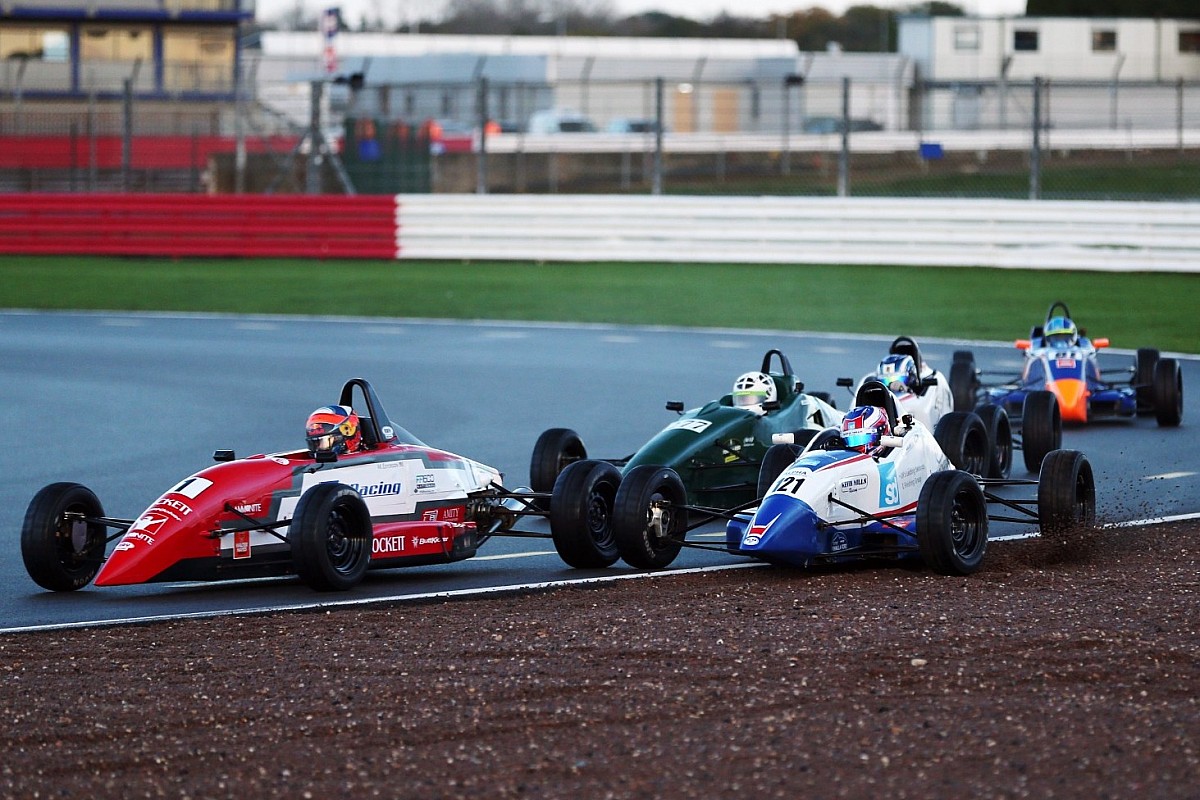
There is no disputing that the end-of-season knockout Formula Ford 1600 showpieces are brilliant events. Close racing, entry lists packed with potential winners, and more than a fair share of drama are the perfect ingredients for an entertaining weekend. And there is usually a dose of controversy, too. But, sadly, this last element – in a variety of forms – has either threatened to overshadow, or actually has overshadowed, the past three events.
Last year’s Walter Hayes Trophy final was delayed by over 45 minutes with cars waiting in the assembly area and eager spectators clueless as to what was happening amid ongoing appeals and hearings into incidents from earlier races. It was fortunate that there was even time for a final at all before darkness descended. There was no such narrow escape at the Formula Ford Festival last month when poor planning that did not take into account long-predicted heavy rain or give any margin for trouble left a pathetic two-lap ‘final’.
Insight: How a repeat of Spa's F1 2021 farce blighted a national racing treasure
And now we still don’t know who won last weekend’s Hayes after on-the-road victor Max Esterson was penalised for a clash with Tom Mills that he unsuccessfully appealed and will now be settled in the National Court. And all that leaves a very sour taste.
These events should be fun for all involved and should be entered in that spirit. We all have to accept that the days when winning an event like the Festival would transform a career and propel a driver on a path that could lead to Formula 1 are long gone. Of course, everybody wants to win and that’s what makes these events special, but it should not be at all costs.
The culture of appealing and protesting anything and everything is not helpful and the winner should be decided on track, not in race control or a courtroom. What is the point in spectators braving the elements – and the BRDC grandstand at Brooklands seemed even more packed than usual last weekend – if what they witness does not match the final result?
The controversial clash in question was far from the worst piece of driving ever seen and was not a malicious move. Undoubtedly, this type of incident sometimes goes unpunished, while other times there is sanction – in other words, it’s far from clear cut. Mills took a risk putting his car around the outside and could have backed out.
Given the nature of these events and how a crescendo builds to the all-important final, perhaps this situation could be avoided with a lighter touch from race control. That does not mean that abysmal driving should go unpunished but, instead, only the most serious indiscretions are investigated after the final. Continual appeals and protests could be banned.

The notion seems fanciful and impractical when aligned to myriad rules and regulations that exist, but could help prevent the sort of uncertainty that now shrouds last weekend’s event. By entering, competitors could even sign up to undertaking such an approach.
Also, let’s not forget that track conditions were incredibly tricky for the final, and that inevitably contributed to Esterson sliding into the path of Mills and should therefore set the bar even higher for any punishment. Instead, those leaving Silverstone on Sunday evening – including beneficiary Joey Foster – departed believing one driver had won the race when it could now actually be someone else.
We may now find out the final winner before Christmas, but the reality is no one truly wins when the outcome is determined so long after the chequered flag
But at least we had a full-length final, and there was a moment on Sunday afternoon when that looked uncertain. The organising Historic Sports Car Club had already done a tremendous job to get roughly back on schedule following significant time lost with red flags and delayed starts for the Progression race and second semi-final. Then torrential rain struck.
The track flooded, darkness fell and huge plumes of water were being shifted by the tractors that tried to clear the circuit. But the sun soon came out, the Silverstone staff and marshals minimised the standing water, and racing could resume with the timetable being successfully completed.
That was just one of a number of positives from the event that should not be forgotten. Another was the size of the entry assmbled by organiser James Beckett. A total of 116 cars took part – a very impressive number, and one that significantly dwarfs the field at the Festival two weeks earlier. It was a truly international entry too because, in addition to the Team USA and Canada scholars, there was an influx of South Africans and Australians – including 2008 British Formula Ford runner-up Tim Blanchard, back in the UK having progressed to Supercars in his homeland.
Sunday’s action was also livestreamed for the first time and there was the brilliant sight of Colin Turner – seriously hurt in the 2020 Hayes – getting back behind the wheel of a Formula Ford for a few laps during the lunchbreak, a remarkable achievement from the tenacious Scot.
It’s just a shame that these positives were somewhat diminished by events off-track after the final. Regardless of what happens now, many will remember Esterson as the winner after another impressive performance – his fightback from 12th to first in a lap and a half after being sent spinning in the second heat (contact for which there was no penalty) was remarkable. We may now find out the final winner before Christmas, but the reality is no one truly wins when the outcome is determined so long after the chequered flag.








